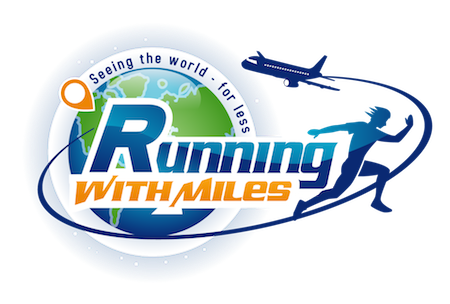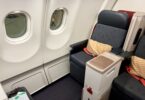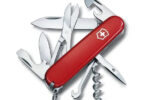With the last of summer/start of fall racing season here, I thought it would be helpful to repost this as you prepare for your races. Good luck throughout the season!
Many runners are competitive by nature. The great thing about running is that you get to constantly compete against the best competition – yourself. Running is a great way to push yourself to be faster on this workout than you were last time or you can push yourself to PR at a distance that you have run before. Not only that, but by planning out ways to place better, it can teach you strategies in your running and planning for future races where the competition might be stiffer.
However, not only do we try to be faster than we were last time, but we often start thinking about being faster than those we race with. If you run many local races, chances are that you know who your “competition” is. When you line up, you may pick that person out and do your best to stay with them and beat them. As you progress in your speed and fitness, you begin to think about how to get a better finishing position. Here are 3 ways to increase your chances of placing in races.
3 Ways to Increase Your Chances of Placing in Races
Obviously, everyone’s first thought is just to run faster than the 3rd place person in your age-group or in the race itself, right? 🙂 That is the sure way but there are some tactics that you can use that will help you in placing. Is it solely ego that makes you want to place better even if it means you really aren’t “3rd place caliber”? Not necessarily. Local races are getting more and more prizes to draw the runner to participate since the number of races are growing. As a result, if you can place in the top 3 in your age group, you may be able to totally wipe away the cost of the race itself with your prize and sometimes do far better than that! In addition to the prizes, you get a large boost to encourage yourself to train harder for the next race where there may be faster runners. It is not all about ego!
1) Pick Your Race Carefully
Once summer/fall time hits, the cities and towns begin to get flooded with road races. It seems that every cause that ever existed has a race to benefit itself. As a result, there may be 3 or 4 10Ks on a single Saturday in your town. Here are some of the things to look for in those races:
- Check them out and review the results from past years. By looking at the results from previous years, you can identify which races typically draw the faster runners
- Check if one of them has a major area sponsor. If so, you can bet that the prizes there will be significantly better than the small town race that does not have a sponsor. I ran a 5K one year that I ended up winning because it was a small inaugural race. The next year, I only placed 3rd.
- Check to see how they bunch their age-groups. You want the finer age-group categories as opposed to the very broad age-groups. I have typically done a 10K that had 10 year age-group categories. I came in 4th each year for the 20-29 ages. The bad part was that the 1-3 places were 20-24. If it had been normal 5 year groupings, I would have been first!
- Check course profile, if possible. If you are noticing normally faster guys turning in times that would be more consistent with your times, it may be due to some large hills
One more thing for the pick your race, when you do pick it, don’t tell your faster friends about this great race you are going to run. 🙂
2) Pick Your Distance Carefully
With all of the local races that hit the summer/fall circuit, many race organizers try to attach different race distances to maximize the number of participants. I mean, why not? If you are organizing a 10K, all you have to do is attach a 5K that does half of the 10K route and start it 15-20 minutes after the 10K. Some races will even feature 3 separate distances for a single race.
Believe it or not, you can increase your chances of placing in a race by simply carefully picking the right distance. I love longer distances. I really am not a big fan of driving a long way to run a 5K. My rule of thumb is normally to not run a race that takes me longer to drive to (one-way) than it does to run the actual race. Since I was quite far from many 5Ks, I did not run a lot of 5Ks. However, if there was a 5K and a 10K at a race, I might think differently based on some of the following things:
- Check which distance has the greater prize payouts. In a 10K/5K race, many times, the 5K race may draw larger donors so the cash payout might be larger for the shorter race. Pick the distance that has the lower prize payouts.
- Again, check the results from previous years. See which distance has the faster runners.
- Run the unpopular distance. In a trail race I ran a few years ago, they had the marathon distance, 50K, and 50 miler. I had signed-up for the marathon just because I had not trained all that much and did not want to do the extra 5 miles. I was surprised at the 20 mile mark that the organizers were actually asking runners if they wanted to upgrade to the 50K instead. It turns out, many runners changed and ran the 50K instead of the marathon. When running trail races, if there is a marathon and 50K, chances are very good that most runners will be doing the 50K. Trails are favorites for ultra-marathons so most people would rather tag the ultra. As a result of the unpopular marathon I ran, I ended up 4th overall and 1st in my age-group (out of 15 runners, though that number was originally 35). 🙂
3) Let the Weather Be Your Friend
Many runners do not like the elements to be too much. Given the number of local races throughout the summer, there are many runners that will skip a race if the weather is bad the morning of the race. They know they can run that same distance at a different race the next day or the next weekend. Also, most local races will let you sign-up the morning of the race at the race. Because of that, you can pick a race completely based on the weather the morning of! Here are some ways to make the weather assist you in placing better.
- If you see it is going to rain, go run that race! The numbers will be down so it should provide a good opportunity to place better.
- If the weather starts getting bad during the race, just remember that everyone else is going to have problems with the weather as well. When that happens, this is your chance to push harder because there will be many runners that back off during inclement weather. I have run in high winds, rain, snow, and humidity. I do not do well with any of those elements, but neither do most people! So, I put my head down and push as hard as I can through it. I have placed 2nd in my age-group at a large half-marathon thanks to rain. The two runners in my age group that were behind me were a lot faster than I was but I passed them as they were struggling with the water/rain. I placed 2nd (in the age-group) in a 10 miler because of wind/snow. The people I passed in my age-group were passed with less than 1/2 mile to go and they were breathing hard due to the wind. Let the weather push you harder!
- Don’t overdress because of the weather. Unless it is a marathon or longer, chances are you not going to be out on the race course too long. That means that you are not going to be hurt by not wearing that jacket. 🙂 When the weather starts to get cold, you will find many runners start to put more layers on. That may seem good to do, but it adds weight and limited mobility when racing. If you opt for less, you will have a bigger movement advantage PLUS the colder you are, the faster you will want to run. 🙂
Summary
I can’t tell you for sure how many races I have placed well in over the years because of these factors. I know for sure that I have placed in at least 7 races that I normally would not have, though. Does that mean that I am faster than the other runners in the area? Absolutely not! But it has helped me to work harder at being able to race better against them. It has also helped me with racing techniques that have assisted me in other races. In addition, I have also picked up quite a few gift certificates that more than paid for my race fees and paid for some of my running gear. Try some of these techniques and see if they help you place better! Obviously, the best way to place better is to run faster, but until then, give these a try.







